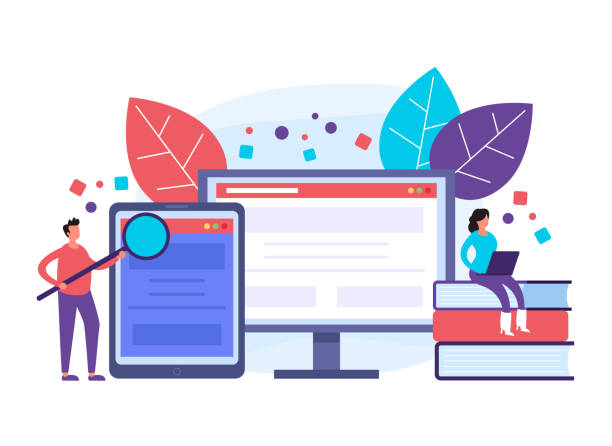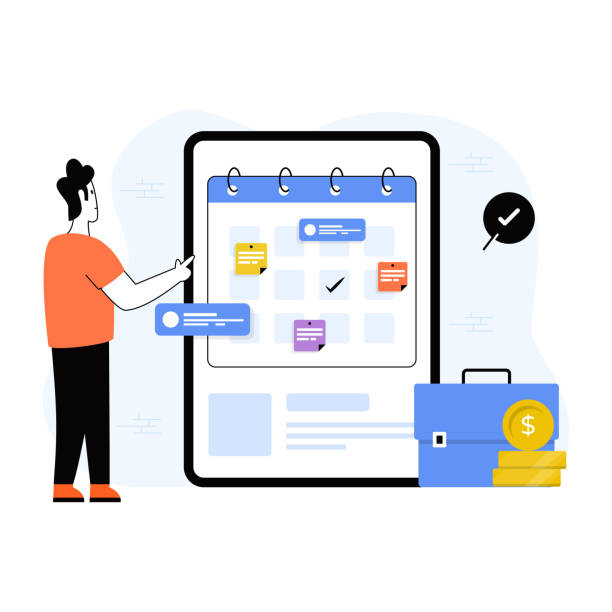Why is having a personal website essential in today’s world?
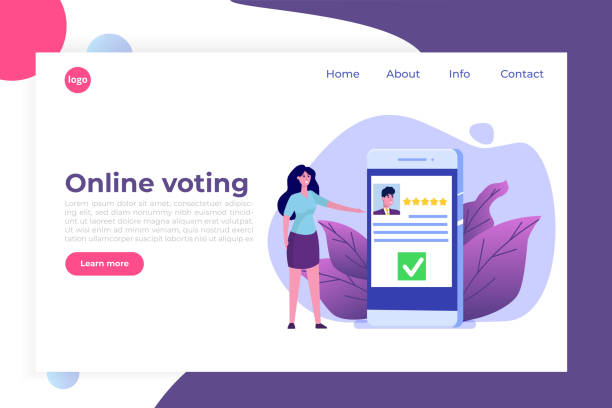
In today’s digital age, having a personal website is no longer a luxury choice, but a vital necessity.
This space allows you to build your #online_identity, showcase your #skills and #experiences, and expand your #network.
A strong personal website design can act as a dynamic online resume that goes beyond a static document, presenting your capabilities visually and interactively.
This website can include portfolios, articles, a personal blog, or even a small store for your products or services.
The main goal of creating an online personal page is #personal_branding and solidifying your position in your specialized field.
With increasing competition in the job market and the growing need to showcase abilities in a modern way, this platform is not only a tool for introducing yourself but also helps you to have complete control over how you display information and messages.
A personal website is like a dedicated showcase that introduces you to the world and allows audiences to get to know your work in greater depth.
This is especially crucial for freelancers, artists, writers, consultants, and specialists in various fields who need to display a live portfolio or resume.
Also, in today’s world where information is shared in seconds, having a stable and reliable base to refer to doubles your credibility.
Have you ever thought about how you can have a stable and independent online presence without relying on social media platforms whose rules and algorithms are constantly changing? This is where the importance of personal website design becomes even clearer.
This website is your digital asset that you can manage and develop however you wish.
It is a long-term investment in your brand and professional future, as it allows you to tell your story your way and connect with audiences on a deeper level.
Analytically, this helps you collect data about your visitors and adjust your future strategies accordingly.
To start the journey of personal website design, you need a deep understanding of your goals, audience, and required content.
This initial stage forms the foundation of your website’s success and provides an explanatory approach to understanding the next steps.
Without this understanding, even the best designs may not achieve the desired results, and your investment may not yield adequate returns.
In this comprehensive article, we will help you proceed step by step on this path and create a powerful and impactful personal website.
Did you know that 85% of customers check your company’s website before any interaction?
Build a corporate website worthy of your credibility with Rasawob.
✅ Increase credibility and customer trust
✅ Attract quality leads
⚡ Get free website design consultation
Setting Goals and Understanding Your Audience; Fundamental Steps Before Design
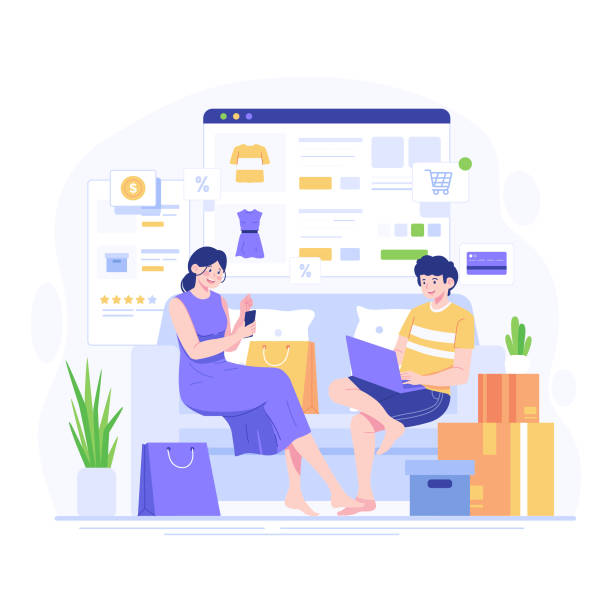
Before any action to design a personal website, you must carefully answer basic questions: What is your goal for this website? What do you want to achieve? Are you looking to attract new clients, or do you intend to showcase your portfolio? Is your goal to create a blog to share your knowledge and experiences, or do you want to build an interactive online resume? #Goal_setting is the first and most important step in the #personal_website_creation process.
This stage, which has a #guiding and #educational aspect, helps you draw a clear path for your project.
Without precise goal setting, your website may turn into a disjointed collection of information that has no impact on the audience.
After defining the goal, it’s time to accurately understand your audience.
This vital step helps you tailor your website’s content and design to the needs and expectations of your visitors.
Who will visit your website? Are they potential employers, future clients, or colleagues in a specialized field? Understanding the #demographics and #psychology of your audience allows you to provide appropriate language, an attractive layout, and relevant content.
For example, if your audience is industry professionals, a website with a professional appearance and specialized content will be more appealing.
In contrast, for a personal blog with a general audience, a friendly style and entertaining or educational content are more suitable.
Researching keywords your audience might search for provides deep insight into their needs.
Knowing what your audience searches for and what their needs are helps you choose appropriate keywords for SEO and optimize user navigation. For example, if you are a graphic designer and your goal is to attract new clients, your audience will be looking for outstanding portfolios and easy contact methods.
Therefore, your website should have a strong portfolio section and clear contact forms.
This understanding allows you to convey your messages more effectively and meet the real needs of the market.
These initial steps not only help you create an effective personal website but also save you time and money.
Careful planning prevents rework and costly changes in the future and makes the personal website design process smoother.
Remember that a successful website is the result of strategic thinking and a deep understanding of its purpose and audience, not just a beautiful visual design.
Choosing the Right Platform; CMS vs. Custom Coding
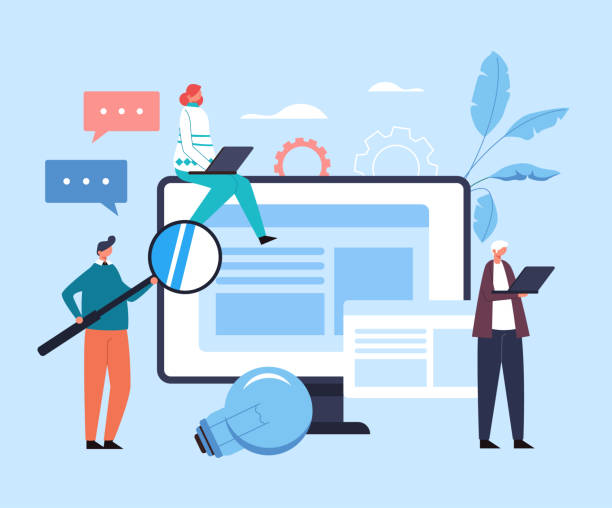
One of the most important decisions in the personal website design journey is choosing the right platform.
This choice will affect not only the speed of development but also the flexibility, maintainability, and long-term costs of your project.
There are two main options in this regard: using Content Management Systems (CMS) such as WordPress, Joomla, or Drupal, or opting for custom coding from scratch.
#Platform_selection is a #specialized and #guiding decision that requires understanding the pros and cons of each method to choose the best option for your specific needs.
Content Management Systems (CMS) like WordPress are very popular for most users and small to medium-sized businesses due to their ease of use, thousands of available themes and plugins, and large user community.
These platforms allow you to create and manage your website without needing deep programming knowledge.
Lower initial costs and high setup speed are the main advantages of CMSs.
However, they may have limitations in design flexibility and complex customizations, and their security depends on regular updates and the selection of reputable plugins.
Reliance on third-party plugins can create potential security risks that require awareness to manage.
In contrast, #custom_coding gives you complete control over every aspect of the website.
This method is more suitable for very specific projects with unique needs or very large and complex websites that require high performance and maximum security.
Costs and development time are higher with this method, and you also need specialized developers for maintenance and updates.
But in return, there will be no limitations in design or functionality, and optimization for speed and SEO can be done in the best possible way.
This method allows you to create a completely unique website tailored to your exact needs that has no equivalent.
For individual site design that primarily focuses on text content, portfolios, or blogs, CMSs are usually the optimal choice.
If you plan to launch a simple online resume, a personal blog, or even a small store, WordPress, with its countless capabilities, is a powerful and cost-effective option.
The final decision depends on your budget, time, technical knowledge level, and the expected complexities of your website.
To aid in this choice, the table below provides a comparison between these two approaches to give you a more comprehensive view.
| Feature | Content Management System (CMS) | Custom Coding |
|---|---|---|
| Ease of Use | Very easy, no coding required | Requires deep programming knowledge |
| Setup Time | Fast | Longer |
| Initial Cost | Low (only hosting and domain) | High (developer fees) |
| Flexibility and Customization | More limited, dependent on theme and plugins | Unlimited |
| Performance and Speed | Moderate, dependent on optimization | Very high, fully optimizable |
| Security | Dependent on updates and plugins | Fully controllable by developer |
| Maintenance | Easy, automatic updates | Requires specialist |
Design Principles and User Experience (UX/UI) for a Personal Website
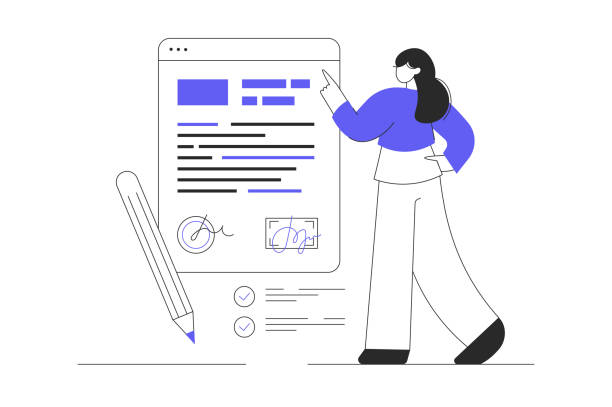
After choosing a platform, we move to a deeper discussion in personal website design: the principles of User Experience (UX) and User Interface (UI).
These two concepts are the main pillars of a successful website, helping your visitors easily interact with your content and have an enjoyable experience.
#User_Experience (UX) refers to how a user feels on your website and how easily they can achieve their goal.
Whereas #User_Interface (UI) deals with the visual appearance of the website, including colors, fonts, layout, and buttons.
This section is educational and specialized, helping you build a website that is both visually appealing and functionally efficient and effective.
A personal website with strong UX/UI not only looks beautiful but is also easy to use. For example, clear and logical navigation, appropriate use of white space for content breathability, and clear Calls to Action are among the key points in UX.
Colors and fonts should be consistent with your personal brand and ensure text readability.
These elements help the user find what they are looking for without confusion.
Attention to visual hierarchy is also important; more important information should be more prominent.
Your website must be responsive; that is, it should display well on all devices, from desktop to tablet and mobile.
This is crucial due to the increasing use of mobile devices for internet access and directly affects SEO.
Also, page loading speed is very important.
Websites that load slowly create a bad user experience and cause visitors to leave.
Optimizing images, using caching, and choosing suitable hosting are ways to increase loading speed.
Finally, attention to accessibility is also important.
Your website should be usable by everyone, including those with visual or hearing impairments.
Using alternative text (Alt Text) for images, appropriate color contrast, and keyboard navigation are among the actions you can take in your personal website design to increase accessibility.
By observing these principles, you can design a personal website that not only looks professional but also creates a positive and lasting experience for every visitor.
Are you tired of losing business opportunities due to not having a professional corporate website?
Rasawob, with its professional corporate website design, helps you:
✅ Build a powerful and reliable image for your brand
✅ Convert website visitors into loyal customers
⚡ Get a free consultation now!
Content Strategy; The Beating Heart of Your Personal Website
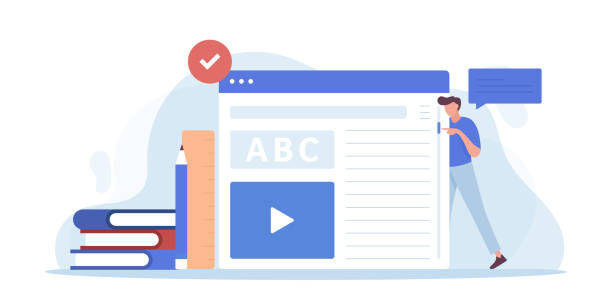
Content is the beating heart of every personal website.
Even the best design and most advanced features cannot attract and retain audiences without engaging, useful, and relevant content.
#Content_strategy goes beyond simply writing a few paragraphs; it’s a comprehensive approach to planning, producing, distributing, and managing content that supports your website’s goals.
This section is of the thought-provoking and guiding type, helping you adopt a targeted approach to your content and utilize your website’s full potential.
What type of content is suitable for your personal website? This is a question that needs to be answered carefully.
Do you want to have a specialized blog in your field of work? Or would you prefer to showcase a portfolio of your projects? Do you intend to publish educational videos or regularly present your personal podcasts? The choice of content type should align with your goal for personal website design and also the needs of your audience.
For example, an artist should prioritize a high-quality image gallery of their works, while a writer needs a strong blog section and text samples.
Diversity in content formats (text, image, video, podcast) can also increase the site’s appeal.
The quality of content is more important than its quantity.
Your content should be original, accurate, engaging, and value-adding.
Avoid plagiarism and try to have a unique voice that reflects your personality and expertise.
Using keywords relevant to your field of activity significantly helps improve your website’s SEO.
Also, visual content such as images, infographics, and videos can multiply your website’s attractiveness and increase user engagement, as visual content is usually processed more easily.
Planning for regular content updates is also crucial.
Static websites without new content gradually lose their appeal and are less noticed by search engines.
You can create a content calendar and have a regular schedule for publishing new material.
This not only encourages visitors to return but also helps you establish yourself as an authority in your specialized field and gain more credibility.
A strong content strategy can literally transform the future of your personal website design and bring it to life.
The Importance of SEO and Search Engine Optimization
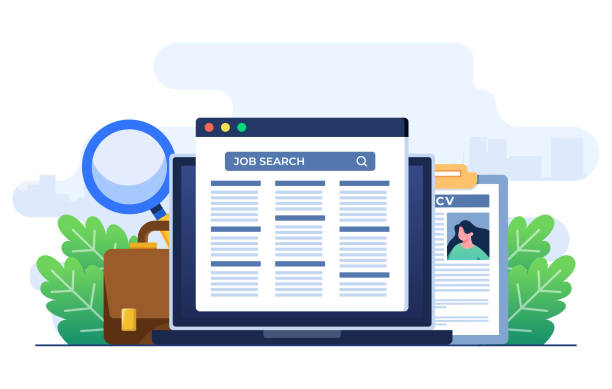
After completing your personal website design and content production, the next step is to ensure its visibility.
This is where SEO (Search Engine Optimization) comes into play.
#SEO is a set of techniques and strategies that help your website rank better in Google and other search engine results and attract more visitors.
This section is #specialized and #educational, and every website owner should be aware of it and take it seriously.
The importance of SEO for a personal website cannot be overlooked. If your website does not appear on the first pages of search results, you will likely lose a significant portion of your potential audience, as most users only look at the first page results.
SEO includes two main parts: On-page SEO and Off-page SEO.
On-page SEO relates to optimizing elements within your website, such as using appropriate keywords in the title, meta descriptions, and content, optimizing images (using Alt tags), friendly URL structure, and internal linking.
High-quality and unique content is the backbone of your on-page SEO, helping search engines better understand your website’s topic.
Off-page SEO refers to activities performed outside your website that help improve its ranking, the most important of which is link building (Backlinking).
Receiving links from other reputable websites shows search engines that your website has authority and value.
This process can be time-consuming and require complex strategies, but its long-term results will be very valuable.
Activity on social networks and sharing your website’s content can also help attract traffic and improve SEO, as social signals can help increase your website’s visibility.
When designing a personal website, consider SEO from the very beginning.
Choosing an appropriate domain name, high page loading speed, responsive design, and website security (using HTTPS) are among the important SEO factors that search engines consider.
By continuously optimizing and tracking SEO performance, you can ensure that your personal website is not only beautiful and functional but also easily found by your target audience and helps you achieve your goals in individual site design and have a strong online presence.
Creating Attraction and Engagement; How to Make Your Website Entertaining?
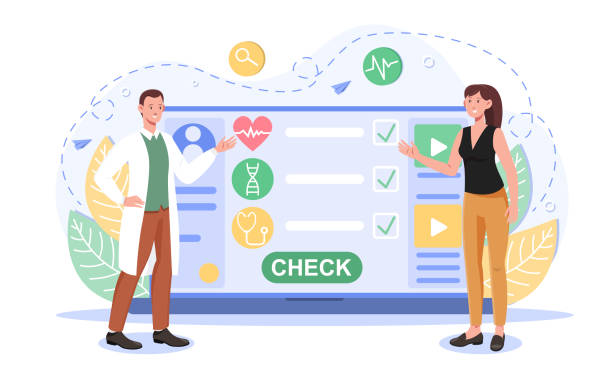
Regardless of whether your main goal for personal website design is professional or educational, adding entertaining and interactive elements can significantly improve the user experience and encourage visitors to stay longer on the site and return.
This approach transforms your website from a static document into a dynamic and living space where the audience enjoys exploring and has the opportunity to connect more deeply with your content.
This section is #entertaining and #analytical, helping you take a different look at your website and go beyond simply providing information.
How can a personal website be made entertaining? One way is to use diverse content formats.
Instead of just text, you can add short videos, engaging podcasts, interactive quizzes, dynamic infographics, or even small games related to your field of work.
If your website is about travel, an interactive map of the places you’ve visited can be very appealing and encourage users to explore more.
For a designer, showing short animations or demonstrating the design steps of a project in video format increases engagement and showcases your creative process.
Interactive features also play an important role.
Comment sections, small forums, personalized contact forms, and even polls allow visitors to interact with you and other audiences.
This two-way communication creates a sense of belonging and makes users feel like they are part of your website’s community.
Using gamification elements, such as scoring active users or offering badges of honor, can also help increase participation and create a sense of competition or achievement among users.
Storytelling is also a powerful element for creating attraction.
Instead of just presenting dry facts, try to tell the story of your personal or professional journey through your content.
This more emotional approach helps audiences connect more deeply with you and makes your messages more memorable.
A personal website design that pays attention to these points not only conveys information but also provides an unforgettable experience.
These elements help you transform your personal website into a lively and dynamic platform that audiences constantly visit and are eager to discover your new content.
Maintenance, Updates, and Security of Your Personal Website
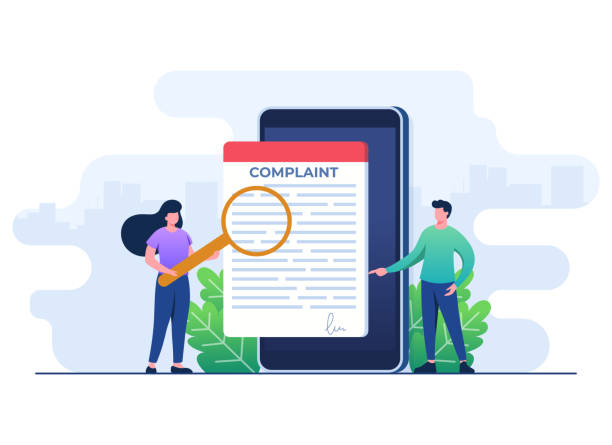
Personal website design is only the first step; regular maintenance, continuous updates, and security are among the most important aspects that ensure the long-term stability and success of your website.
An abandoned website not only quickly loses its value but can also become a security risk.
This section is #guiding and #informative, providing you with vital information to maintain the health of your website and prevent potential problems.
#Website_maintenance includes several tasks: checking broken links, updating content, responding to comments and messages, and monitoring the site’s technical performance.
For CMS-based websites like WordPress, regular updates of the CMS core, themes, and plugins are crucial.
Developers constantly release security patches and performance improvements, and failure to install them can leave your website vulnerable to cyberattacks.
Always backup your website before performing major updates so you can revert to a previous version if problems arise.
Website security is of paramount importance.
Using strong and unique passwords, enabling two-factor authentication (2FA) for admin panel login, installing an SSL (HTTPS) certificate for data encryption, and using reputable security plugins (if using a CMS) are among the actions you can take to enhance your website’s security.
Regular security scans to identify malware and vulnerabilities are also recommended.
Every online personal page creation requires serious protection of its data and information, as your reputation depends on the security of user information.
Also, #monitoring_website_performance through tools like Google Analytics or Google Search Console helps you identify traffic, user behavior, and potential errors.
This information is invaluable for future decisions regarding content and website optimization and allows you to adjust your strategies based on real data.
A successful personal website is the result of continuous attention to all these aspects.
The table below provides a checklist of maintenance and security tasks.
| Period | Maintenance and Security Tasks |
|---|---|
| Daily/Weekly | Check backups, monitor security (login logs), respond to comments and contact forms, monitor server performance |
| Monthly | Update CMS core, themes, and plugins, check broken links, optimize database, review SEO performance |
| Quarterly | Review content (delete or update old material), check website speed, full security scan, evaluate user experience |
| Annually | Renew domain and hosting, comprehensive review of SEO and content strategy, evaluate overall website performance, plan for major updates |
Do you have an e-commerce site, but your sales are not as expected? Rasawob solves your problem forever with professional e-commerce website design!
✅ Significant increase in conversion rates and sales
✅ Exceptional user experience for your customers
⚡ Click now to get a free consultation!
Earning Opportunities and Networking Through Your Personal Website

A personal website design goes beyond a mere display of capabilities or a simple blog; it can serve as a powerful platform for earning income and expanding professional networking.
This aspect of a website, often overlooked, but with an #analytical and somewhat #entertaining approach, hidden opportunities can be discovered, and its financial and professional potentials realized.
One of the most common ways to earn income from a personal website is through selling digital products or services.
If you are an artist, writer, consultant, or coach, you can sell your digital artwork, e-books, online courses, or consulting services directly through your website.
Adding a simple online store with plugins like WooCommerce in WordPress has made this very easy and allows you to have complete control over the sales process.
Another method is Affiliate Marketing.
By promoting others’ products or services on your website and receiving a commission for each successful sale or referral, you can earn income.
This method is effective when the products are related to your area of expertise and add value to your audience, rather than being purely promotional.
Displaying advertisements (like Google AdSense) can also be a source of income, but it should be used cautiously so as not to disrupt the user experience and clutter your website.
Networking opportunities are also numerous.
Your personal website can act as your online business card, allowing you to connect with colleagues, potential employers, and like-minded individuals in your industry.
Having a professional contact form, a comprehensive About Us section, and direct links to professional social media profiles (like LinkedIn) helps facilitate these connections.
Participating in online events and conferences and referring to your website in these spaces can significantly increase your visibility and open up new opportunities.
Ultimately, a successful individual site design can lead to invitations for speaking engagements, participation in larger projects, or even book publication.
This potential for earning and networking transforms the personal website into a powerful tool for professional growth and demonstrates that personal website design is not just an expense but a profitable investment whose returns will exceed your initial expectations.
Website Performance Analysis and Future Growth Path
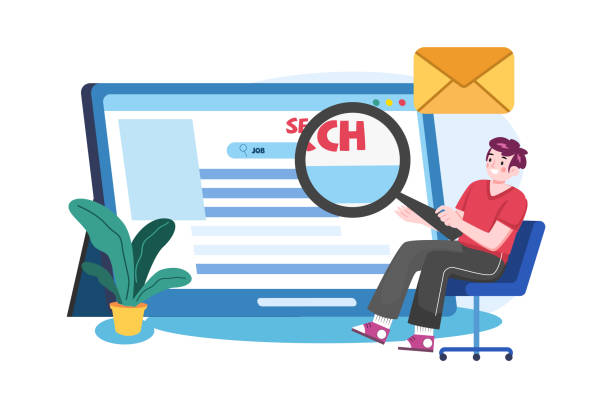
After personal website design and launching it, your work is not finished.
The next critical step is #website_performance_analysis.
This stage allows you to understand how successful your website has been, which sections need improvement, and how you can develop it in the future.
This section is #analytical and #guiding, essential for the sustainable growth of your website, helping you make data-driven decisions.
Tools like Google Analytics and Google Search Console provide invaluable data.
You can monitor the number of visitors, most visited pages, user time spent on the site, bounce rate, and traffic sources (e.g., from Google search, social media, or direct links).
Analyzing this data helps you gain a deeper understanding of your audience’s behavior and identify your website’s strengths and weaknesses. For example, if the bounce rate for a specific page is high, it may indicate that the content of that page is not engaging or does not meet user expectations and needs to be revised.
Your #future_growth_path for the website should be shaped based on these analyses.
If you find that your blog section attracts a lot of traffic, you can focus on producing more and higher-quality content in that section.
If most visitors access your site via mobile, you must ensure that your website is fully responsive and mobile-optimized to provide a better user experience.
Creating an online personal page is a continuous process of learning and improvement that requires flexibility and readiness for change.
Also, you can use survey tools or feedback forms on your website to directly ask your visitors what they like, what they don’t like, and what content they want to see in the future.
This #direct_feedback is a treasure trove of information that can guide you in developing and improving your personal website and help you build a website that perfectly matches your audience’s needs.
Finally, remember that the success of a personal website does not happen overnight.
It is a long-term investment that requires attention, regular updates, and a willingness to learn and adapt to changes in the online space.
By continuously analyzing and planning for the future, you can transform your website into a powerful and stable tool for achieving your personal and professional goals and always stay at the forefront.
Frequently Asked Questions
| No. | Question | Answer |
|---|---|---|
| 1 | Why should we have a personal website? | A personal website allows you to professionally showcase your resume, portfolio, experiences, and perspectives, and strengthen your personal brand. This helps increase career and networking opportunities. |
| 2 | What content should we put on a personal website? | It usually includes “About Me”, “Resume” (skills and experiences), “Portfolio” (projects and achievements), “Blog” (articles and insights), and “Contact Me” sections. Content should be consistent with your website’s goal. |
| 3 | What is the best platform for building a personal website? | WordPress is a very popular choice due to its high flexibility, numerous themes and plugins, and large user community. Platforms like Wix and Squarespace are also suitable for beginners. |
| 4 | What should be considered when designing a personal website? | Responsive design for correct display on mobile and tablet, high loading speed, simple and attractive User Interface (UI) and User Experience (UX), and Search Engine Optimization (SEO) are key points. |
| 5 | How to choose a suitable domain name for a personal website? | It is best for the domain name to be simple, short, memorable, and related to your name or personal brand. Using common extensions like .com, .net, or .ir is recommended. |
| 6 | What is the importance of the Portfolio section on a personal website? | The portfolio section is the strongest tool for showcasing your skills and completed projects. This section helps potential employers or clients tangibly see your abilities and have more confidence in you. |
| 7 | Is adding a blog section to a personal website useful? | Yes, a blog allows you to share your expertise through articles and writings, interact with your audience, and improve your site’s ranking in search engines by producing fresh content. |
| 8 | How can a personal website be made to look professional? | Using a clean and modern design, a high-quality and professional profile picture, writing content without spelling or grammatical errors, and ensuring all links and forms function correctly greatly contribute to a professional website. |
| 9 | What does personal website maintenance and updating include? | Regular content updates, checking links and forms, regular backups of information, and updating the Content Management System (like WordPress) and plugins are essential for maintaining security and proper functionality. |
| 10 | How much does it cost to design and maintain a personal website? | The cost can vary. It includes domain purchase (approx. $15-50/year) and hosting (approx. $50-200/year). Using free themes or paying for premium themes and plugins also affects the overall cost. |
And other services of Rasa Web advertising agency in the field of advertising
Smart Content Strategy: A combination of creativity and technology to increase click-through rates through SEO-driven content strategy.
Smart Brand Identity: A combination of creativity and technology to increase click-through rates by customizing user experience.
Smart UI/UX: A creative platform for improving campaign management with precise audience targeting.
Smart Social Media: A professional solution for digital branding focusing on optimizing key pages.
Smart Google Ads: A combination of creativity and technology to increase sales by optimizing key pages.
And over a hundred other services in the field of internet advertising, advertising consultation, and organizational solutions
Internet Advertising | Advertising Strategy | Advertorials
Resources
Personal Website Design in IranDevHow to design a personal website?Complete Guide to Personal Website DesignBenefits of Having a Personal Website
❓ Are you ready to transform your business in the digital world? Rasawob Afarin, a leading digital marketing agency, paves your path to growth by offering comprehensive services including custom website design, SEO, and advertising campaign management.
📍 Tehran, Mirdamad Street, next to Bank Markazi, Kazeroun Jonoubi Alley, Ramin Alley, No. 6

